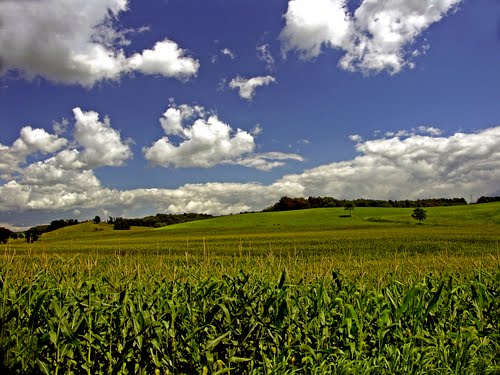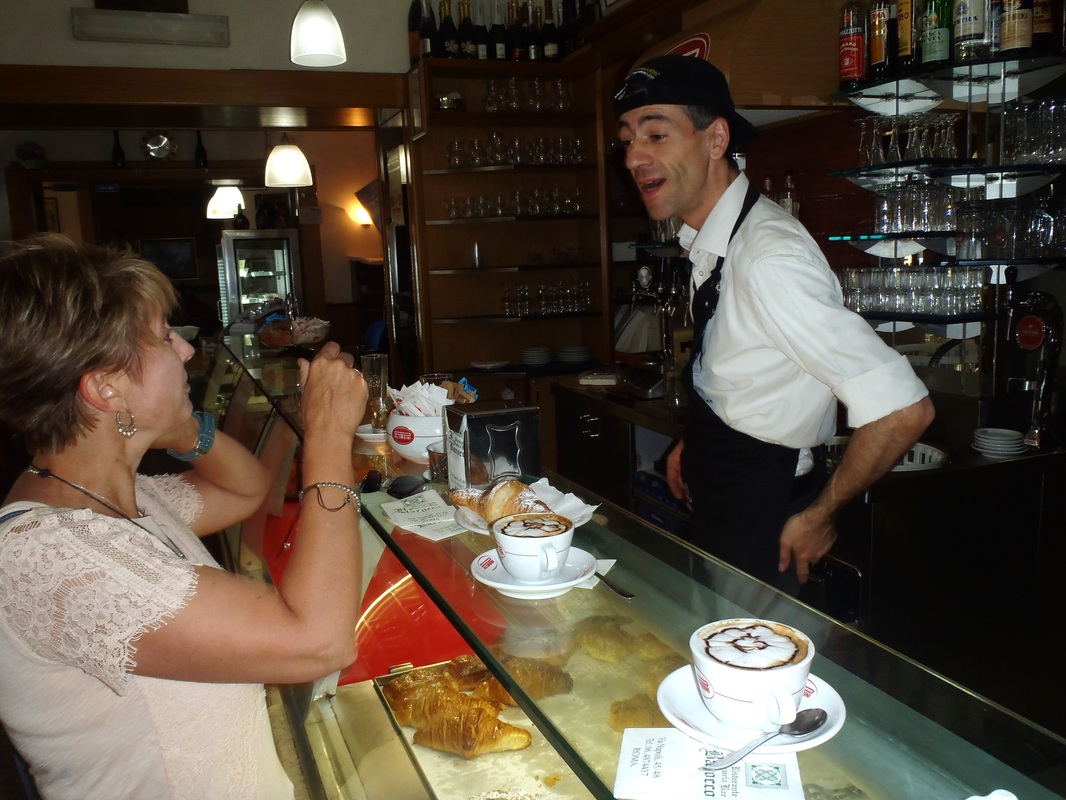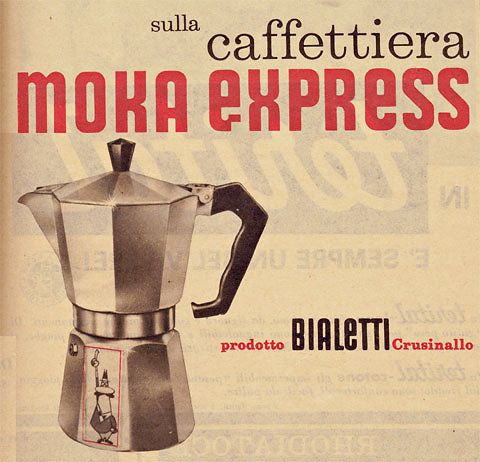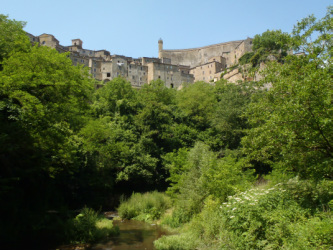Well, that's not exactly how it worked out. . . I did find a flyer for an area farm market. We drove out to it following signs that wound us around quite a lot of country highway. There is no way we would have found it by chance. The stand was operated by a Mennonite family and as we discovered, Mennonites also ran a general store and a bakery along the same route. The farm stand had some great watermelons, fresh eggs, corn and tomatoes. But not much else. Truly, the pickings were rather slim. There was an entire wall of jams, jellies and preserves, but no lettuces or greens--even the summer squash were small and a bit shriveled. I found some colorful frying peppers, a purple onion and a small carton of red potatoes to round out our shopping. We also bought a cheerful bouquet of zinnias and gladiolas at a reasonable price. I was glad to have some fresh food to work with, but a bit disappointed that I was not in the farm-fresh produce belt I expected considering the miles of planted fields we'd passed (albeit almost all planted with corn and soy).
The general store had even sadder looking produce--it's specialty (that people lined up for every time we were there) was the deli counter, and bulk candy . . . the bakery obviously specialized in sweets and again people were lined up buying cream horns, whoopie pies, apple fritters, cream sticks, cinnamon buns--everything was mammoth in size. Admittedly, we frequented the bakery for fruit pies--a treat for which we have a penchant rarely indulged. Blueberry, peach, blackberry, and--ok--even pecan and shoo fly. But truly, we had to watch ourselves because the food at restaurants was so heavy too. Broasted chicken, fried fish, canned green beans with ham (I'd almost rather eat the can), deep-fried french toast, bbq. Salads or garnishes, rarely offered, never ventured beyond iceberg lettuce turning brown.
What I find concerning is what does a person do who lives in that town and for whom driving 20 miles is impossible? Elderly folks, or those who cannot afford an automobile, or the disabled who cannot drive? This is what is referred to as a "food desert" and unfortunately it impacts those who can least afford it, both in terms of finances and health. A couple of years ago Scientific American ran a cover feature about this, I've included the link below. Most of us are aware enough to know this happens in the inner city, but would we suspect it happens in rural farming regions? This experience has me pondering my own food habits and leads me to pose a few questions for readers.
- Where do you get your food? Local grocery stores? Farmers' Markets? Stands? Chain supermarkets? Local artisan shops? (I buy local produce at the local family supermarket where the prices are best and the produce cheapest--as compared to the farmers market).
- Have online stores improved your ability to eat healthy? Two of my favorites: Swanson Vitamins and DrVita.com offer health foods, like specialty flours, organic cacao nibs, and coconut oil at lower prices. And, of course, there is Amazon. I get my dried shiitaki mushrooms in bulk from them.
- How much of your food can you make yourself? No-knead artisan bread is a great place to start. There are tons of recipes on the web. Even I have managed to master a good cinnamon raisin that is really filled with raisins.
- What restaurants do you frequent? Can more of your business go to local establishments, ethnic food places, or places that focus on healthier fare?
Depending on your geographic location, you may live in a desert or a grassland when it comes to food choices. Thankfully, more options exist than used to, but that doesn't necessarily help those without means or mobility. This isn't a problem with an overnight solution, but if we consider our food choices more carefully we can support and grow an economy that will hopefully provide better for everyone and increase our national health.
http://www.scientificamerican.com/article/high-and-dry-in-the-food/
Artfully yours (and laying off the pie)-- Lisabeth





 RSS Feed
RSS Feed